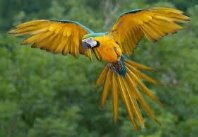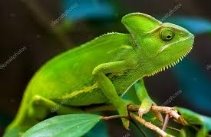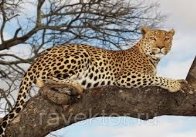Strange, Clever, Funny…Wild Animals
1
English lesson with elements of nature integration
Lesson Plan
Form: 4
School: № 14, Melitopol
Teacher: Stupak Olena
Topic: Strange, Clever, Funny…Wild Animals
Objectives:
- to develop pupils’ reading, listening, speaking and writing skills;
- to review and practice vocabulary;
- to develop their intellectual faculties;
- to widen pupils’ outlook;
- to work in pairs, groups;
- to teach pupils to understand the important role of people in life of animals.
Materials to Be Used:
Pupil’s books by Oksana Karpiuk “English-4”, workbooks, computer, pictures, cards with tasks .
Procedure
- Introduction:(10 minutes)
1.1. Greeting
Teacher (T.): Good morning, students!
Pupils (P-s): Good morning, teacher!
T: Greet each other!
P-s sing “Hello How are you?”
https://www.youtube.com/watch?v=tVlcKp3bWH8
- Presentation of Lesson Topic
T: Our Lesson Topic is…You should look at the blackboard and write the letters in the right order. Then you get the lesson topic!
(P-s do the task and write “Wild Animals Are Strange, Clever, Funny…“
T: And our aims are:
Read and write,
Listen and speak,
Because you have your English twice a week!
Learn new rules,
Look up new facts,
This is the best way to study perhaps!
- Warm-up
(T. gives questions to P-s., using the picture with wild animals)
|
|
|
|
T.: P1, what is this?
P1: This is a parrot.
T: P2, What colour is it?
P2: It is blue and yellow.
T: P3, where is it?
P3: It is in the jungle.
T: P4, what animal is it?
P4: It is a leopard.
T: P5, What is it doing?
P5: It is lying on the tree.
T: P6, Are leopards friendly or dangerous?
P6: They are dangerous.
T: P7, What colour is the chameleon and why?
P7: It is green because it is calm.
T: P8, Are chameleons with usual skins?
P8: No, they are not. They are with unusual skins. They change the colour of their skins like actors change clothes.
T: P9, What do chameleons eat?
P9: They eat insects with very long tongues.
T: P10, Where do these animals live?
P10: They live in Africa.
- Main Part:(25 minutes)
2.1. Listening
T.: And do you know the names of domestic animals?
P-s: Yes, we do.
T: Let’s sing the song “Old McDonald” (addition 1)
https://www.youtube.com/watch?v=LIWbUjHZFTw
|
|
T: Thank you! P1, Name domestic animals in this song!
P1: Chicks, ducks, cats.
- Speaking
T: Now we’ll divide into three teams. (P-s choose cards with animals). So, we have the team #1 “Panthers”,
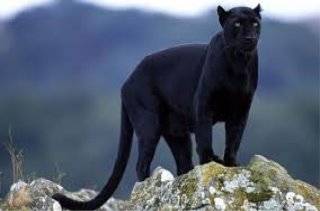
the team #2 “Giraffes”,
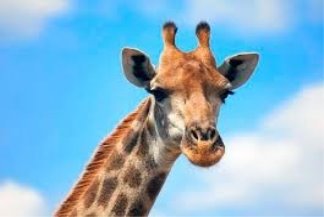
the team #3 “Pandas”

Your next task is to find and write out domestic and wild animals into two columns.
Team “Giraffes”: ptroypolarbearlkuidoglogcrocodilelitcockkadghsealposthamstermondaylizardpen goosemenlofoxhatpolgoat
Key:
|
Wild animal |
Domestic animals |
|
A polar bear |
A dog |
|
A crocodile |
A cock |
|
A seal |
A hamster |
|
A lizard |
A goose |
|
A fox |
A goat |
Team “Giraffes”: hokchimpanzeenettramcatoldmonkeylkouytfarmhorsepontrzebranrtdfgoapigorad penguinmotradhenzokmgdleopardjoabgturkey
Key:
|
Wild animal |
Domestic animals |
|
A chimpanzee |
A cat |
|
A monkey |
A farm horse |
|
A zebra |
A pig |
|
A penguin |
A hen |
|
A leopard |
A turkey |
Team “Pandas”: lookpandabookduckgoodelephantlerdrabbitobadluytrkangarooloopcowfrance giraffeuogdsheepchyuo jackalhgchick
|
Wild animal |
Domestic animals |
|
A panda |
A duck |
|
An elephant |
A rabbit |
|
A kangaroo |
A cow |
|
A giraffe |
A sheep |
|
A jackal |
A chick |
- Check on Homework
(P-s tell about their favourite animals using pictures)
(addition 2)
- Reading
(Pupil’s books—exercise 3c, d page 123-124)
(addition 3)
- Dance Song For Children “Jungle Boogie - Animal Songs”
https://www.youtube.com/watch?v=D4gQObuPtf0
- Speaking
(Pupil’s books—exercise 4 pag124)
(addition 4)
- Writing
(Pupil’s books—exercise 5 pag125)
(addition 5)
VI. Homework (3 minutes)
T: Imagine you are any wild animal and tell us about yourself, your classmates have to guess who are you.
VII. Summarizing (7 minutes)
(P-s. get marks. They answer the teacher’s questions:
* Do you like domestic or wild animals? Why? Why not?
* Is it important to take care about animals? Why? Why not?
Addition 1
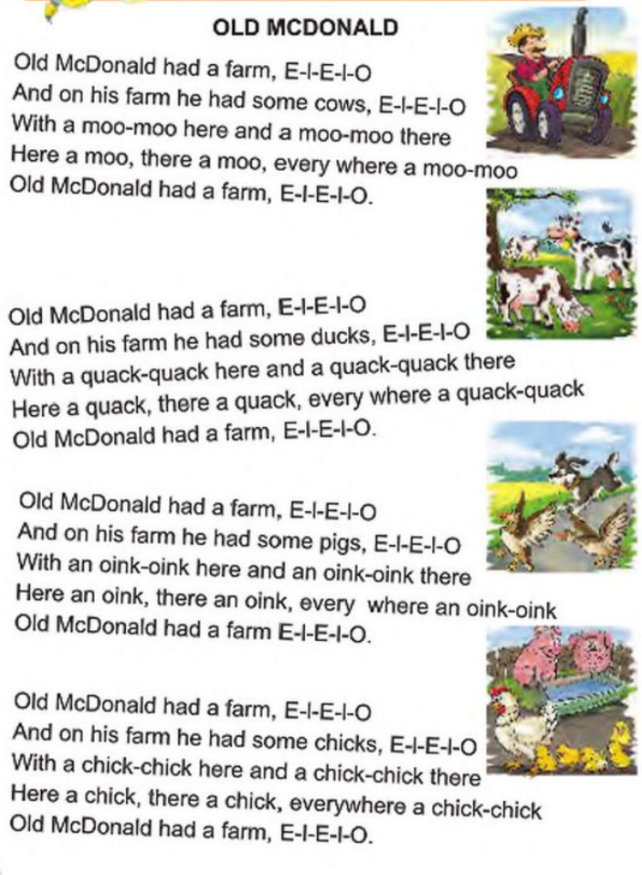
Addition 2
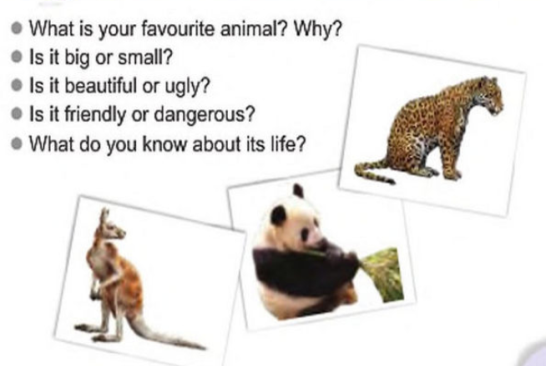
Addition 3
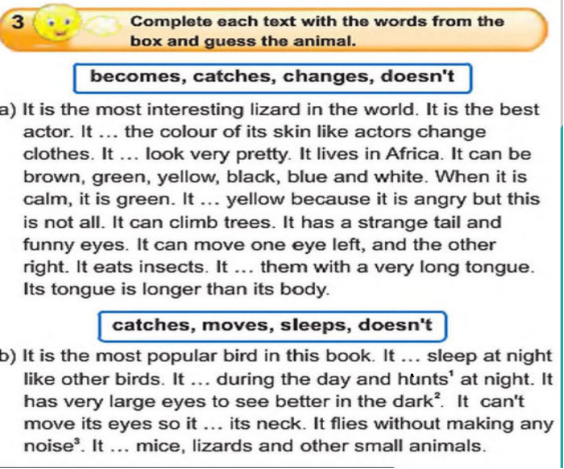
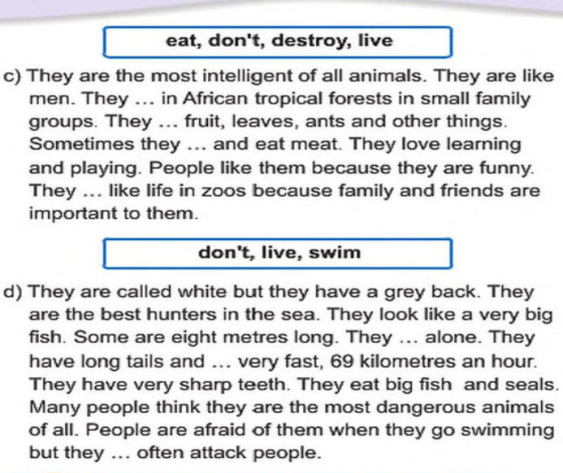
Addition 4

Addition 5
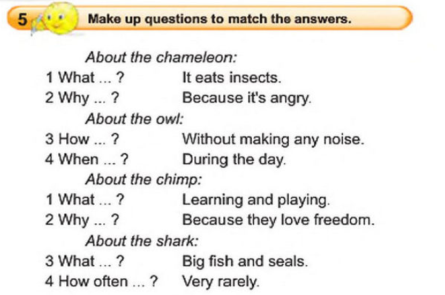


про публікацію авторської розробки
Додати розробку

